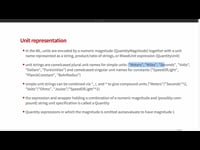This page requires that JavaScript be enabled in your browser.
Learn how »
Wolfram 语言在平面几何中的应用
杨圣汇 (Wolfram 开发)
Mathematica 拥有更为直观的语义几何结构构建方法以及丰富的平面几何资料库,能够帮助学生和老师解决很多授课、测试以及数学竞赛当中遇到的平面几何问题。本讲座将介绍该软件在求解平面几何的具体使用方式,通过若干实例来详细讨论在各类情况下如何与 Mathematica 其强大的内置函数进行交互,帮助用户找到解决问题的核心。
Thanks for your feedback.
Channels: Technology Conference
1311 videos match your search.
 |
Eric Weisstein & Michael Trott |
 |
Riccardo Di Virgilio Come to a hands-on session with the developers of the ExternalEvaluate framework. Bring your questions, suggestions, ideas and problems while working with external languages. Don't have a specific question? Then ... |
 |
Todd Gayley,Bob Sandheinrich,Bradley Ashby,Connor Gray ,Richard Hennigan , Brian Van Vertloo |
 |
Jordan Hasler Modern learning spaces combine computation, visualization and concept exploration. Wolfram|Alpha Notebook Edition facilitates all three, teaching Wolfram Language along the way. This talk demonstrates the breadth and depth of ... |
 |
Paige Vigliarolo and Treyton Jansen Learn about book publishing using Wolfram Language. We'll explain our various programs for supporting authors working to publish both with Wolfram Media and with other publishers. A brief demonstration of ... |
 |
Mads (Mohammad) Bahrami, John Mcnally and Yi Yin |
 |
Rory Foulger Our programs push students to deeply engage in their subject area while becoming resilient and self-motivated computational thinkers. Educators, parents, and students are welcome to come and explore the intentional ... |
 |
Giulio Alessandrini, Timothee Verdier, Bob Sandheinrich , Christopher Wolfram, Avery Davis and Connor Gray |
 |
Giulio Alessandrini, Jesse Galef |
 |
Carlo Barbieri The objective of this workshop is getting you started with the main concepts of working with Relational Databases through the Entity framework in the Wolfram Language. |
 |
Bart ter Haar Romeny StyleGAN (Style Generative Adversarial Network) is a type of generative model capable of generating realistic images. It is not trivial to explain what happens inside. In this computational essay, I ... |